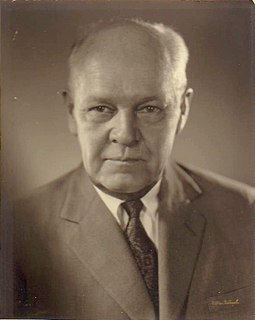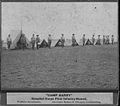
During the American Civil War, the Union Army, also known as the Federal Army and the Northern Army, referred to the United States Army, the land force that fought to preserve the Union of the collective states. It proved essential to the preservation of the United States as a working, viable republic.

The Royal Army Medical Corps (RAMC) is a specialist corps in the British Army which provides medical services to all Army personnel and their families, in war and in peace. The RAMC, the Royal Army Veterinary Corps, the Royal Army Dental Corps and Queen Alexandra's Royal Army Nursing Corps form the Army Medical Services.

Dr. Joseph Lovell was the 8th Surgeon General of the United States Army,,

The Army Medical Department of the U.S. Army (AMEDD), formerly known as the Army Medical Service (AMS), encompasses the Army's six medical Special Branches. It was established as the "Army Hospital" in July of 1775 to coordinate the medical care required by the Continental Army during the Revolutionary War. The AMEDD is led by the Surgeon General of the U.S. Army, a lieutenant general.

East Potomac Park is a park located on a man-made island in the Potomac River in Washington, D.C., United States. The island is between the Washington Channel and the Potomac River, and on it the park lies southeast of the Jefferson Memorial and the 14th Street Bridge. Amenities in East Potomac Park include the East Potomac Park Golf Course, a miniature golf course, a public swimming pool, tennis courts, and several athletic fields. The park is a popular spot for fishing, and cyclists, walkers, inline skaters, and runners heavily use the park's roads and paths. A portion of Ohio Drive SW runs along the perimeter of the park.

USAT Thomas was a United States Army transport ship purchased on 26 July 1898 for Spanish–American War service. Thomas served with the Army Transport Service (ATS) until retired in 1929.

The surgeon general of the Navy (SGN) is the most senior commissioned officer of the Medical Corps of the United States Navy and is the principal advisor to the United States Secretary of the Navy, Chief of Naval Operations and director of the Defense Health Agency on all health and medical matters pertaining to the United States Navy and United States Marine Corps. As head of the Bureau of Medicine and Surgery, the surgeon general also manages Navy and Marine healthcare policy, administering the services' healthcare and biomedical research facilities as well as the various staff corps of BUMED, including the Medical Corps and an enlisted corps. The surgeon general is also a member of the Office of the Chief of Naval Operations.

James Benjamin Peake was the sixth United States Secretary of Veterans Affairs, serving from 2007 to 2009. In 2004, he retired from a 38-year United States Army career. He also served as the 40th Surgeon General of the United States Army.
United States Volunteers also known as U.S. Volunteers, U.S. Volunteer Army, or other variations of these, were military volunteers called upon during wartime to assist the United States Army but who were separate from both the Regular Army and the militia.

Edgar Gibson "Eddie" Crossman. was an attorney and senior partner in Davis, Polk, Wardwell, Sunderland & Kiendl, an officer in the United States Army in World War I and World War II, and a diplomat.
The Third Army Corps was a unit of the United States Army raised for the Spanish–American War. After the declaration of war, General Order 36 of May 7, 1898 approved the organization of eight "army corps," each of which was to consist of three or more divisions of three brigades each.
The Seventh Army Corps was a unit of the United States Army raised for the Spanish–American War. After the declaration of war, General Order 36 of May 7, 1898 defined the organization of eight "army corps," each of which was to consist of three or more divisions of three brigades each.
The Fourth Army Corps was a unit of the United States Army raised for the Spanish–American War. After the declaration of war, General Order 36 of May 7, 1898 approved the organization of eight "army corps," each of which was to consist of three or more divisions of three brigades each.
The First Army Corps was a unit of the United States Army raised for the Spanish–American War.
The Fifth Army Corps was a formation of the United States Army raised for the Spanish–American War, and noted chiefly for its victory in the Siege of Santiago, which led to the general collapse of the Spanish war effort.
Markleton is an unincorporated community in Somerset County, Pennsylvania, United States. The community is located along the Casselman River 7.7 miles (12.4 km) east-northeast of Confluence.
Brigadier General Charles Henry Alden was a prominent member of the United States Medical Corps. He was the first president of the Army Medical School.
Levi Lewis Dorr was an American Civil War veteran and physician. He served at the Battle of Antietam, and as a physician was one of the original faculty of Cooper Medical College, the predecessor to Stanford University School of Medicine.
The Provisional Army of Tennessee was activated on May 9, 1861, when Tennessee had entered into a military league with the Confederate States. The provisional army were to contain 25,000 men for field service and 30,000 in the reserves. The staff officers were appointed by the Governor, while the field, company, and non-commissioned officers were elected by the men. It was transferred to the Provisional Army of the Confederate States as of July 31, 1861; the transfer being concluded by August 7, the same year.
















